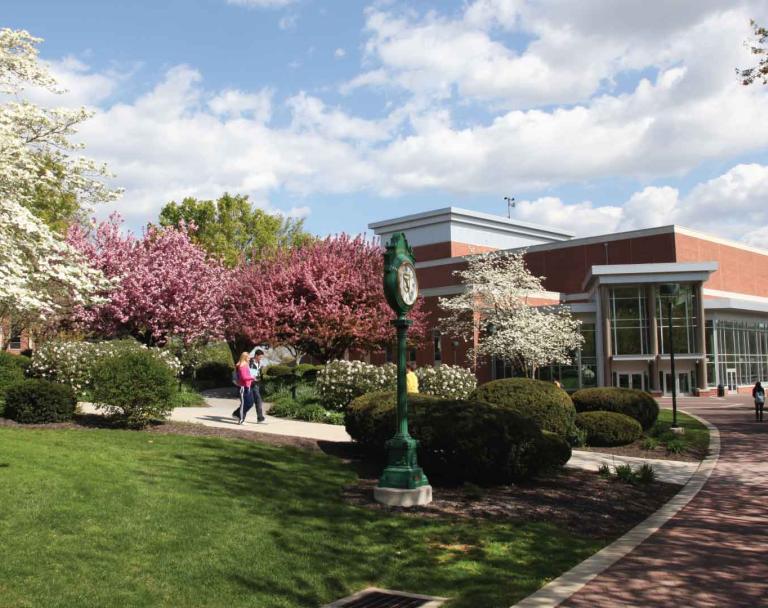Civil Engineering at the National Aquarium

- Academics
- Kinsley School of Engineering, Sciences and Technology
- Spotlights
- Civil Engineering at the National Aquarium
Civil Engineering Students Discover New Possible Career Paths at the National Aquarium
Civil Engineering faculty Drs. Josh Wyrick and Alison Kennicutt recently took a group of 47 juniors and seniors in the major to the National Aquarium in Baltimore, Maryland.
The idea
According to Civil Engineering faculty member Dr. Josh Wyrick, when most people think of civil engineering, they think of infrastructure. They don’t think of the connection between civil engineering and water resources.
“If you ask a common person what civil engineers do, they might come up with, ‘Oh, they design buildings and bridges and things like that, right?’ And that's really more on the structural side—building those physical things that our society uses as infrastructure,” says Dr. Wyrick, who specializes in hydraulics and hydrology courses. “So even within Civil, the concept of water resources is [that] it's necessary, but it's not necessarily the reason that people become civil engineers.”
“Civil engineering is intertwined in so many aspects of everyday life,” says Dr. Alison Kennicutt, Assistant Professor of Civil Engineering. “Being able to find a more unique application, like the aquarium, is always exciting and creates a memorable experience for the students.”
The idea for the trip came from a student in Dr. Wyrick’s Fluid Mechanics class in fall 2020.
“In that class, I give students an assignment where they have to go find a real-world example that matches what they’re learning in class,” Dr. Wyrick says. “But one of those students had actually gone to the Aquarium and talked about the pumps and pipes [there]. I thought it was a great idea.”
Broadening Career Paths
The trip to the National Aquarium, with transportation sponsored by Bailey Coach, consisted of several behind-the-scenes tours, where students were split into groups to see the engineering processes responsible for maintaining the Aquarium exhibits. Dr. Wyrick encouraged students to think about how the tanks operate.
“[We] don't usually think about the behind-the-scenes part,” says Dr. Wyrick. “How do those fish tanks get maintained? And because those fish need clean water, they need moving water, and if they're out in the real world that happens naturally. But if we plop [them] into this tank, we’ve got to make sure that the water is moving and the water stays clean.”
Dr. Kennicutt’s students were able to see how the water for the exhibits was prepared to support the aquatic life there.
“Students who had taken my Water Treatment Processes Design course had done some bench-scale experiments of activated carbon adsorption systems in the lab, and we were then able to see how that was being used at the Aquarium as a pre-treatment process for the tanks,” Dr. Kennicutt explains.
For students like senior Ethan Hail, who graduated in August 2022 and plans to work in wastewater management, the trip to the Aquarium was an opportunity to apply what he’d learned in the classroom to a real-life situation. He spent much of the trip analyzing the layout and systems of the Aquarium.
“There is definitely overlap [between engineering and wastewater management],” says Ethan. “It’s a lot of conveyance. You have to move it around the whole facility. [And you have to think about] what you need to do to keep [the water] healthy, because fish poop

